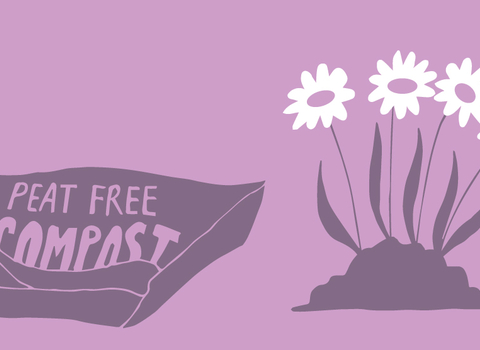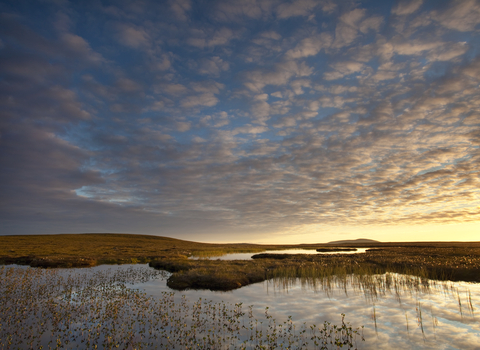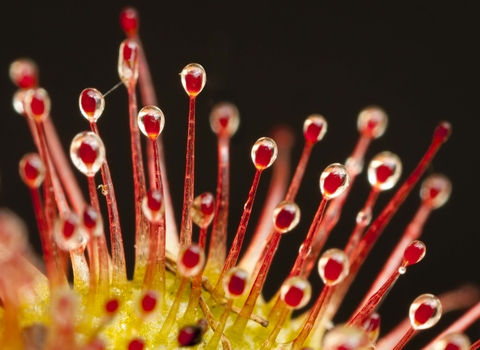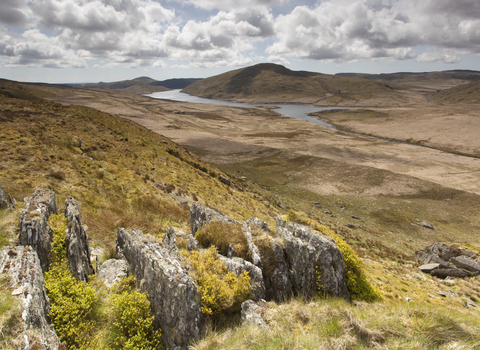What are peatlands?
Peatlands are amazingly wild places, home to rare and unusual plants, birds and insects. They are wetland landscapes characterised by waterlogged soils made of dead and decaying plants, called peat. Peat forms at an incredibly slow rate, accumulating on average only 1mm a year - that means it takes 1,000 years for one metre of peat to form! The key component of peat is a moss called sphagnum, which forms multi-coloured carpets across the landscape and breaks down very slowly under the waterlogged conditions.
In the UK we have three main types of peatland habitat: lowland raised bog, blanket bog and fen. Lowland raised bog and blanket bog are both unusual wetlands, as they are entirely fed by rainwater and snow melt rather than ground water. More often found in hilly and mountainous areas, there are some low-lying peatlands remaining, although most have been drained for agriculture.
Why are peatlands important?
Our UK peatlands store an amazing 3.2 billion tonnes of carbon. When considered globally, this is even more impressive, as they cover just 3% of land area but in that pack 30% of all soil carbon! In a healthy state, they are also beautiful, dramatic landscapes, home to rare and endangered wildlife such as large heath butterflies and wading birds like dunlin.
But there is even more to peatlands, as they help to alleviate flooding, by slowing the flow of water and filter water, making it cleaner when it comes to our water processing plants - and eventually into our taps, with 70% of drinking water coming from upland areas dominated by peat.
A natural solution to the climate crisis
Our peatlands represent a huge carbon store so are essential in our fight against climate change. However, over 80% of the UK's peatlands are damaged - and when damaged, the peat becomes dried and exposed to the elements, and instead of storing and taking up carbon emits it back into the atmosphere as CO2.
If just 5% more of our peatlands were to go, the amount of carbon lost would equate to the total annual UK man-made greenhouse gas emissions. Therefore its really important that we restore them back to health, so that they keep carbon locked up in the ground. Once restored to a healthy, functioning habitat they will also start to absorb carbon as they build up more peat.
Threats and pressures
Historically in some places such as the Peak District, atmospheric pollution related to the industrial revolution has led to the degradation of peatlands. However, the big driver has been the drainage of peatlands in an attempt to make them more productive for agriculture i.e. less waterlogged and better for growing crops. Drainage for forest planting in places like northern Scotland also led to large amounts of peatland being destroyed.
Other pressures on peatland has included the extraction of peat for horticulture. This still continues today, although the majority of the peat in our garden centres now comes from Eastern European, shipping the problem to other countries. Burning and overgrazing also intensifies peatland erosion leading to exposed peat, which is more vulnerable.
Conservation and recovery
The vast stores of carbon in our peatlands need long-term management. This will keep the existing carbon locked up in the ground and with carefully managed and monitored peatland restoration work, lead to the capture of more carbon as well as a reduction in flooding, cleaner water and more places for wildlife to thrive.







